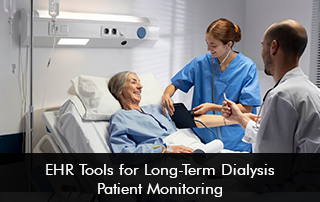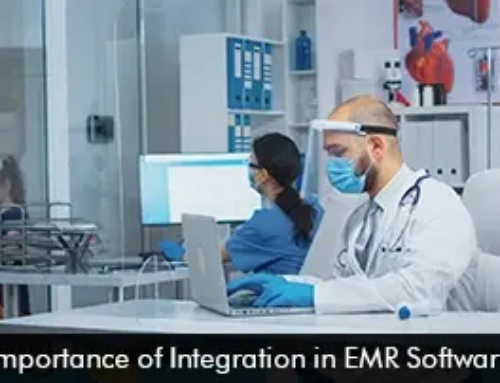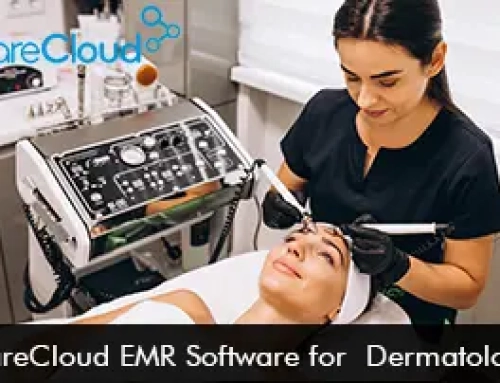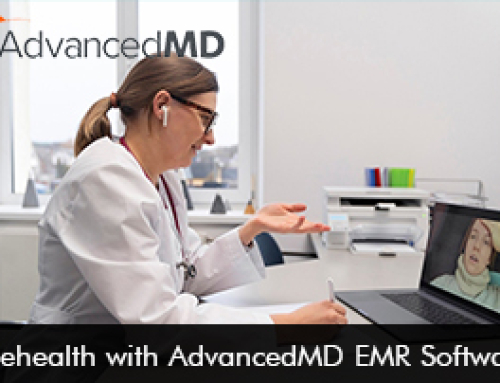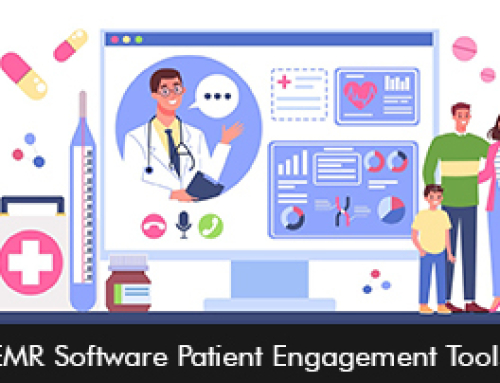For long-term dialysis patients—whose health depends on precision, consistency, and rapid response—EHR software is no longer a convenience; it’s a clinical necessity. From real-time vitals integration to dialysis round tracking, today’s EHR tools are revolutionizing how nephrologists and care teams deliver life-sustaining care.
The Critical Role of EHR in Dialysis Care
But not all EHRs are created equal. With the healthcare ecosystem pushing for interoperability, practice management efficiency, and remote patient monitoring (RPM), the right EMR system can mean the difference between reactive treatment and proactive, personalized care. Whether you’re a seasoned nephrologist, a healthcare administrator, or a tech-curious clinician, this blog unpacks everything you need to know about the latest in dialysis-focused EHR tools—and the platforms leading the charge in 2025.
- Dialysis patients—especially those with chronic kidney disease (CKD) and end-stage renal disease (ESRD)—require vigilant, ongoing monitoring.
- Modern Electronic Medical Records (EMR) and Electronic Health Records (EHR) systems empower clinicians to track vital signs, dialysis sessions, medications, and lab results in real time.
- Today’s EHR platforms go beyond static charting—they integrate interoperability, practice management, revenue cycle management, and patient-engagement tools, all vital to high-quality dialysis care.
Core Features of EHR Tools for Long-Term Dialysis Monitoring
-
Dialysis‑Specific Scheduling & Round Tracking
- Automates scheduling of dialysis sessions, including tracking the number of rounds completed.
- Provides alerts for missed sessions or irregular patterns. OmniMD’s Nephrology EHR highlights dialysis round tracking as a key time‑saving feature.
-
Real‑Time Vital Signs and Metrics Monitoring
- Seamlessly integrates with dialysis machines and wearable devices to monitor BP, weight, ultra filtration rates, etc.
- Alerts staff to abnormalities during or post‑dialysis. As EMRSystems notes, EHRs “monitor vital signs and dialysis metrics in real time, alerting staff to irregularities”.
-
Customizable Documentation & Templates
- Offers dialysis‑specific templates (e.g., CKD staging, recipe, vascular access sites).
- Enhances efficiency while maintaining accuracy—a feature emphasized in Jon’s review of dialysis EMR systems.
-
Interoperability & Lab Integration
- EHRs use APIs and HL7/FHIR standards to integrate with labs, imaging facilities, and practice management software. AdvancedMD and OmniMD both highlight robust lab connectivity.
-
Practice Management & Billing/RMC Integration
- Centralizes scheduling, claims submission, and revenue cycle management within one platform.
- OmniMD and AdvancedMD provide built‑in billing modules linked directly to EMR entries.
-
Patient Engagement & Portals
- Secure messaging, appointment reminders, lab results access, and educational resources.
- Tools like Athenahealth’s athenaPatient (or communicator features) enhance engagement across the dialysis journey.
-
Analytics & Reporting
- Dashboards track key quality metrics: Kt/V, hemoglobin levels, inter dialytic weight gain, infection rates.
- Reporting modules support CMS/MACRA/MIPS quality reporting.
-
Remote Patient Monitoring (RPM) and AI Insights
- RPM devices track vitals between sessions; AI‑powered platforms like TrajVis offer predictive CKD trajectory insights.
- Wearable integration (e.g., Epic + smartwatch) is beginning to appear.
Latest Highlights & Innovation in Dialysis EHR
- AI‑enabled predictive analytics: Solutions like TrajVis use longitudinal data to identify patient deterioration risk early.
- Wearables + EHR integration: Pioneering work (e.g., ROAMM‑EHR) shows real‑time smartwatch data flowing into EHR charts.
- Population‑health focused RPM: Systems leveraging IoT sensors and remote monitoring to prevent hospitalizations.
Top 5 EHR Solutions for Dialysis Monitoring
Here are five of the most highly recommended EHR platforms used by physicians and dialysis centers, with reasons they stand out:
Epic EMR
- A go‑to for large hospitals and dialysis networks, with modules for inpatient/outpatient dialysis, vascular access, and integrated practice management.
- Features include Epic’s Chronicles/Clarity/Caboodle analytics for trend analysis and Cosmos for big‑data collaboration.
- Strong interoperability via APIs and FHIR, alongside patient‑facing portal MyChart (150 million+ users).
- Robust billing, quality reporting, and customizable workflows—though implementation can be resource‑intensive.
OmniMD Nephrology EHR
- Tailored specifically for CKD and dialysis care: includes dialysis round tracking, RPM, telehealth, integrated billing, patient engagement, and lab interfaces.
- Cloud‑based and ONC‑certified; emphasizes practice management, revenue cycle management, and interoperability.
- Designed by nephrologists, supporting both independent clinics and multi‑specialty groups.
AdvancedMD
- Offers a unified platform combining customizable EHR templates, practice management, telehealth, e‑prescribing, and analytics.
- Features include “Task Donuts” visual task manager and lab/pharmacy integrations.
- Ideal for mid‑size nephrology practices looking for a cloud‑based end‑to‑end solution.
Athenahealth (athenaOne)
- A fully integrated EMR + practice management + care coordination suite, known for intuitive UX and strong usability.
- Built‑in billing/Revenue Cycle Management (athenaCollector) and patient engagement via athenaCommunicator/Patient.
- Cloud‑based, HIPAA‑compliant, and ONC‑certified—great for clinics seeking scalable interoperability.
NextGen Healthcare
- Offers specialty‑customizable templates, robust population health, RPM, patient portals, and billing integration.
- Backed by strong analytics and data‑hub architecture, with deep HL7/FHIR capabilities.
- Suits small-to-mid nephrology practices and multi‑specialty groups.
Why These Platforms?
| Platform | Strengths in Dialysis Care |
| Epic | Institutional adoption; powerful analytics; scalable |
| OmniMD | Dialysis‑focused; RPM & telehealth ready |
| AdvancedMD | Unified practice ops; easy customization |
| Athenahealth | Integrated RPM + care coordination; intuitive UX |
| NextGen | Template-rich; population health & analytics |
All five are ONC‑certified, HIPAA‑compliant, and offer interoperability to integrate with labs, devices, and billing systems seamlessly.
EHR systems have transformed dialysis patient care from episodic visit management to continuous, data-driven monitoring. With features like scheduling, RPM, analytics, and patient portals, these platforms now deliver:
- Enhanced patient safety through real-time alerts
- Smarter clinical workflows via customizable templates
- Better financial health with integrated billing
- Robust interoperability across systems and devices
- Insightful analytics for proactive interventions
For nephrology and dialysis teams aiming to elevate care, investing in a modern EHR is no longer optional—it’s essential.


